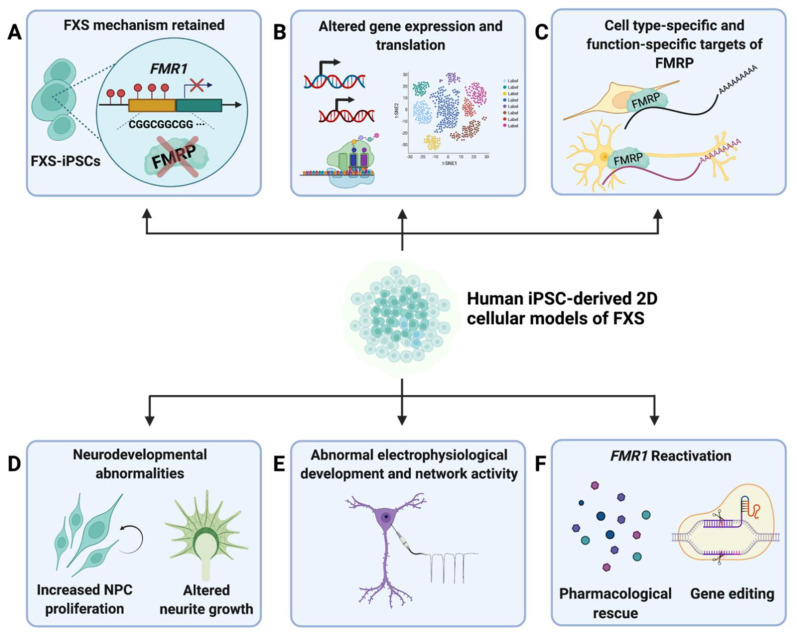Figure 1.
Summary of major findings from 2D FXS−iPSC−derived models. (A) Studies that have utilized 2D hiPSC-derived models of FXS have found that the fundamental molecular mechanisms of FXS pathology is retained in iPSCs derived from primary cells of FXS patients (FXS-iPSCs) [46,47]. (B) FXS-iPSCs and derived neural cells showed altered gene expression and translation compared to controls [21,52,53,54,55,56,57]. (C) Studies of targets and functions of FMRP showed that there are cell-type-specific [23] and function-specific [58] targets of FMRP [23,58]. (D) Neurodevelopmental abnormalities, including increased NPC proliferation [21,23,53] and altered neurite growth [47,48,53,55,59], were characterized in iPSC-derived models of FXS. (E) FXS-iPSC-derived neural cells exhibited electrophysiological abnormalities [24,59,60,61,62,63]. (F) Pharmacological rescue [64,65,66,67,68,69] and gene editing [70,71,72,73] are two major methods of FMR1 reactivation that have been explored.

